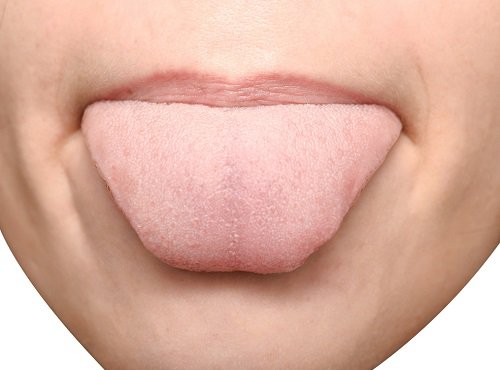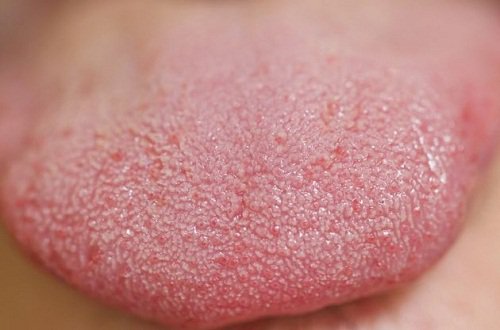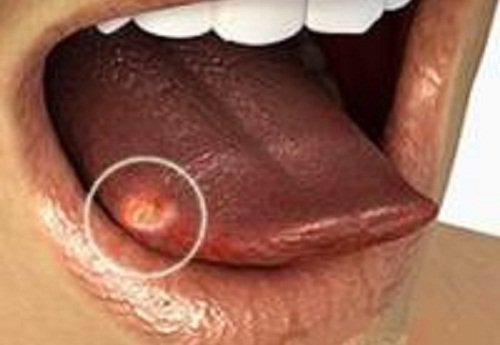Your Tongue, Health, and Emotions

The tongue is one of the most informative muscles that we have in our body. In addition to its role in the digestive process, the tongue can say a lot about your health emotions. Learning to read your tongue can help you discover potential health problems.
This is due to the fact that the tongue is covered in thousands of nerve endings that are associated with different organs throughout the body. When something isn’t functioning properly in our body, the tongue lets us know by changes in color or texture.
Read more here: Natural Remedies for White Tongue
This time, we want to give you a guide so you’ll be able to understand what your tongue is trying to say about your health. You can start now by looking in the mirror and examining your own tongue in detail.
Pink tongue
This type of tongue lets us know that we’re healthy and leading a healthy lifestyle. It’s a sign of proper diet and digestion and also tells us that we’re emotionally stable.
Red tongue

On an emotional level, a red tongue means you’re irritated or stressed.
Small ulcers on the tongue and what they say about your health

At the emotional level, small tongue ulcers can mean a person is easily upset and constantly anxious and stressed. This type of tongue is also typical among those who suffer from repressed anger. You should frequently monitor your oral hygiene and consult a doctor in case they’re the result of infection.
Inflamed taste buds
This is a clear sign of a nutritional deficiency. It’s very important to follow the dietary recommendations we give for a white tongue since they’re key to fighting this problem. Also, you should gently clean your tongue with your toothbrush every time you brush your teeth.
Inflamed taste buds can also manifest due to stress or difficulty adapting to changes.
White tongue
This tongue is a clear indicator that a person is experiencing problems with the intestines and digestion. It can be the result of consuming too many saturated fats, refined sugars, and flour.
It can also be a sign of toxemia, which is the accumulation of toxins in the intestines and blood. Toxemia can lead to other health problems.
If you notice that your tongue is covered by a white coating, it’s very important to change your eating habits and opt for a cleansing diet free from saturated fats, processed foods, dairy products, and all fried foods.
At the emotional level, a white tongue can mean a nervous and anxious state. These emotional states can encourage digestion problems and cause the malfunction of various vital organs, which can seriously impact our health.
Smooth tongue
This type of tongue not only reveals nutritional deficiencies, but can also spell anemia. In this case, we recommend eating more foods that are rich in vitamin C and iron. Emotionally, it can mean that you’re prone to depression and are easily discouraged.
Discover: Tongue Whiteness is Solved with 8 Natural Remedies
Inflamed tongue
An inflamed tongue can be a symptom of low hemoglobin levels (a condition more commonly known as anemia).
Map-like tongue
This type of tongue looks like a map, with similar “drawings” on its surface that can be red, pink, or white. It can also be hereditary, but if it’s recurring, it can signal an allergy or intolerance to certain foods.
Emotionally, people with these tongues are often very sensitive and easily irritated or bothered.
All cited sources were thoroughly reviewed by our team to ensure their quality, reliability, currency, and validity. The bibliography of this article was considered reliable and of academic or scientific accuracy.
- Qi, Z., Tu, L. P., Chen, J. B., Hu, X. J., Xu, J. T., & Zhang, Z. F. (2016). The classification of tongue colors with standardized acquisition and ICC profile correction in traditional Chinese medicine. BioMed Research International. https://doi.org/10.1155/2016/3510807
- Oji, T., Namiki, T., Nakaguchi, T., Ueda, K., Takeda, K., Nakamura, M., … Hirasaki, Y. (2014). Study of factors involved in tongue color diagnosis by Kampo medical practitioners using the Farnsworth-Munsell 100 hue test and tongue color images. Evidence-Based Complementary and Alternative Medicine. https://doi.org/10.1155/2014/783102
- Zhang, B., Wang, X., You, J., & Zhang, D. (2013). Tongue color analysis for medical application. Evidence-Based Complementary and Alternative Medicine. https://doi.org/10.1155/2013/264742
This text is provided for informational purposes only and does not replace consultation with a professional. If in doubt, consult your specialist.








